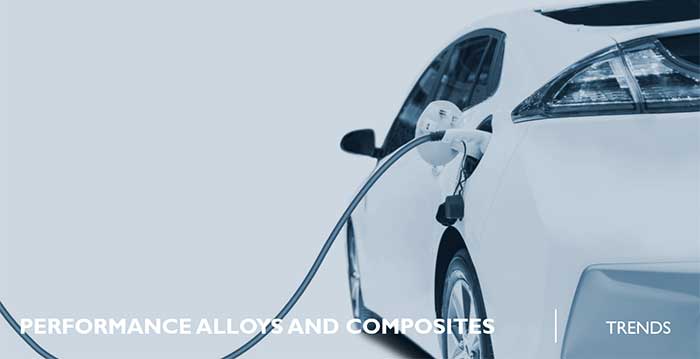
Despite many struggles for the automotive market in 2020, the electric vehicle (EV) plug-in segment showed a very different trend. As of October 2020, the total volume increased 21% compared with the previous year and overall EV sales were up 90% in Q3 2020 compared with 2019. With many global locations, including most major European countries, offering financial incentives and tax benefits for electric vehicles throughout last year, EVs have become a more popular option for consumers—but is this electric vehicle growth expected to continue? And what are some of the newest EV innovations moving the industry forward? Let’s take a look at the key trends I’m following closely this year.
The automotive industry as a whole is expected to witness a strong rebound after a troubling 2020, which will only further contribute to the growth within the EV market. Right now, many projections expect the EV industry to experience a 30-40% growth this year, reaching approximately three million units sold. As the industry grows, engineers are constantly seeking ways to enhance technology and improve overall performance.
The first technology-based trend to keep an eye on is the evolution of pack design. Many new models will be released with higher density packs and an increased number of cells within the packs. By increasing the number of cells, the packs can achieve a 50% or higher cell density. This means EVs will have a longer driving range—up to 400 miles—before needing to recharge, compared with the current average of 250 miles. In addition, 800V or higher battery packs will become the new standard, replacing the 400V or lower packs that have been the standard to this point. Other benefits of this technology include faster charging, less weight and reduced power loss.
Next, expect to see the shift toward a simpler, module-free battery pack. By eliminating excess structure and materials, this adaptation will also support an improved energy density that leads to faster charging rates.
Developments in solid state batteries are expected to be another focus this year. This battery technology, which uses solid electrodes and a solid electrolyte instead of liquid or polymer gel electrolytes, has the potential to also increase the driving range, lower charging time and improve overall safety. The first SUV prototype containing a solid-state battery pack is expected to be released later this year.
The last trend I’m watching is an ongoing development of fuel cell vehicles (FCVs). While some automotive companies are purely focused on battery powered electric vehicles, others are exploring an electric vehicle alternative in the form of these hydrogen-powered FCVs. In many cases, auto makers are cost effectively testing the technology in passenger cars so that they can be scaled for use in higher-cost commercial vehicle applications. We can expect to see continued research and improved technology on FCVs in 2021 and for years to come.
As EVs become more common for passenger vehicles, expect to see a continued focus on increasing distance between charges and decreasing charge time in order to benefit end users. If you’d like to continue this EV conversation, you can contact me at sejin.im@materion.com or connect with me on LinkedIn.